TOP 3 BUSINESS COMMUNICATION SKILLS
On any given day, you're likely to communicate with a host of people, including those that lead you, those that work alongside you, those that you lead, and those with whom you do business. It’s important that you’re able to effectively communicate with a variety of different people in your day-to-day life. Even simple miscommunications can harm your relationships.
In order to keep those important relationships intact, it’s critical to learn to communicate in a way that is well crafted, easily delivered, and open to receiving return messages. It starts with finding a common ground, displaying empathy, and building bonds with your team. Being part of a team means setting aside personal differences and working toward a common goal.
Learning the following three business communication skills will help you navigate this ocean of relationships that you deal with on a daily basis with intelligence and tact.
1. CRAFTING A CLEAR MESSAGE
The first step in effective business communication is to craft the message you need to share. We’ve all sat through long, drawn-out meetings where nobody was clear what the point was afterwards. So it's best to avoid lengthy meetings whenever possible.
Twitter allows 140 characters per tweet. It requires users to edit their thoughts to only the most important words necessary to convey a desired message. Communication in the workplace could benefit by following this example.
Crafting a clear message begins with writing a first draft. Open up a new Word document or your notebook and begin writing down everything you need to say. This first draft allows you to quickly say what you want to say without any critique. Normally this draft will be wordy and possibly rambling, but your message will be transferred from your thoughts to a document.
Once you have the first draft down, you can read the message, remove unnecessary words, replace weak words with words that more clearly convey your message, and rewrite sections that ramble. This process does not require excessive time and you will get faster at it the more you execute it.
As with a tweet, your final document will be simple, straightforward, and focused. This process is not only helpful for written messages, but also as preparation for spoken messages, as well.
2. DELIVERING A CLEAR MESSAGE
Once you’ve crafted a clear and concise message, you must choose the best avenue to share it. A valuable business communication skill is learning which delivery method will best present your desired message in a clear way.
- Face to Face. Serious messages should be carried out face-to-face. For example, if you are sharing a vision shift in your organization, informing employees of changes in leadership, or discussing salary matters, communicate in person if at all possible.
- Phone Calls/Video Chat. Less serious, yet significant messages can be handled through phone calls or video chat. Examples could include:
- Explaining the details of a complex assignment
- Adding duties to or subtracting duties from a person's job description
- Resolving minor conflicts in the workplace
- Non-Verbal Delivery. Mid to lower level messages can be clearly delivered through a variety of other methods available (email, voicemail, text, etc.). One must add an extra dose of care when using these methods, however. Without the recipient hearing your tone of voice, seeing your facial expressions, or watching your body language, the potential for misunderstanding is greater.
Regardless of how you deliver your message, presentation is very important. You must present your information in a way that is engaging, motivating, and, most importantly, effective. When presenting your message, it’s important to also be a good storyteller and use data, stories, and real-world examples to encourage your audience to view your goal the same way you do.
3. RECEIVING A CLEAR MESSAGE
If you master creating a clear message and delivering a clear message, you are still only two-thirds of the way to effective communication in the workplace. On the other end of the conversation, you must also master receiving a clear message. This involves active listening or what many like to call "intentional listening." Often we use the time while someone is speaking to plan our next move—what we are going to inject into the conversation as soon as they stop speaking.
Often we use the time while someone is speaking to plan our next move—what we are going to inject into the conversation as soon as they stop speaking.
Sometimes we get so anxious to say what we want to say that we even interrupt before the other person is finished. All the while, we really aren't fully hearing what they are saying. Intentional listening involves forcing our mind to stay focused on the person speaking and the words they are saying. This may not come naturally at first, but we must choose to become intentional listeners. It includes eye contact to demonstrate respect for the person, nodding to acknowledge points being made, and "leaning in" body posture to show interest. The business communication skill of receiving a clear message will help us hear intended messages with accuracy and clarity.
Business Communication Skills You Can Use Today
Effective business communication skills are key to becoming a great leader. The good news is that you don’t have to spend months or years reading books and articles or sitting in seminars and courses in leadership training to develop these skills. You can get started today, online, and gain skills you can use tomorrow at work.
To begin communicating better today, learn your personality and communication style by taking our short and quick personality profile. It only takes a few minutes to complete and it will provide you with valuable insights into how you can understand others. It's an incredible resource, used by thousands of leaders, to help understand the personality of those they work with and lead!
Start coaching better leaders today!











